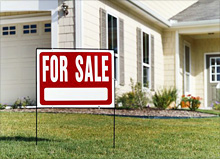First-time homebuyers leading market back
Housing recovery is being propelled by affordability, bringing entry-level buyers back into the market.

| 30 yr fixed | 3.80% |
| 15 yr fixed | 3.20% |
| 5/1 ARM | 3.84% |
| 30 yr refi | 3.82% |
| 15 yr refi | 3.20% |
NEW YORK (CNNMoney.com) -- Propelled by the first-time homebuyers tax credit, nearly half of home sales are now being made by first-time purchasers, according to an industry report released Friday.
In fact, 47% of all Americans who purchased homes this year had not owned one during the previous three years, according to a press release Friday from the National Association of Realtors (NAR). That was up from 41% of sales in 2008 and 36% in 2006.
The tax credit boosted markets by giving first-time buyers a credit of up to $8,000 they could deduct from their income taxes. The credit is fully refundable: Even a buyer who pays less than $8,000 in income tax gets the full amount of the credit back.
The credit was recently extended through the middle of 2010 and expanded to include many existing homeowners. That has the industry buzzing.
"The credit is working better than first projected -- it now looks like we'll have 2.3 to 2.4 million first-time buyers this year," said Lawrence Yun, chief economist for NAR. "With expansion of the tax credit to additional buyers through the middle of next year, and no major unforeseen events impacting the economy, home prices should rise between 3% and 5% in 2010."
NAR forecasts that existing-home sales will total slightly over 5 million in 2009, a 2% increase compared with 2008. Next year, they predict a gain of 13.6% to 5.69 million units. That should draw down inventory and prop up home prices, according to Yun, but, he cautioned: "Risks, such as unemployment, remain."
Critics of the tax credit call it a poorly targeted method of boosting sales. The credit added, by nearly the most positive evaluations -- including NAR's -- fewer than 400,000 sales to the total this year, about 20% of all first-time purchases.
Since all first-timers get the credit, whether it persuaded them to buy or not, that would mean about $40,000 was spent by the government for every extra sale, critics say.
Indeed, many in the industry trace the improvement in the housing market to much better affordability, rather than the tax credit.
Not only have home prices fallen more than 30% from their peak, according to the S&P/Case-Shiller Home Price index, but mortgage rates have remained extremely low all year, keeping monthly payments low.
Most sales have been of existing homes. New home sales, as well as new home construction, have remained mired in the doldrums.
NAR predicts total new home sales will total a mere 397,000 this year, rising to 549,000 in 2010. During the housing boom, new home sales were far higher, more than 1.35 million in 2005, for example.
While new home sales are still very low, the inventory of new homes for sale has been dropping. That's because very few new homes are being built. Existing home inventory has also fallen a bit.
"We've seen a steady downtrend in housing inventory for well over a year," said Yun.
Any home price rise will also have a healthy impact on the foreclosure plague. Falling prices are a major contributing factor driving foreclosures. As home values fall, homeowners are less able and less likely to continue to make monthly payments.
Mortgage borrowers often fall behind because there's no home equity cushion to tap should they run into unexpected expenses.
Too, when home values really plummet and owners fall way underwater, owing far more than their home is worth, it sometimes makes good financial sense to give up trying to pay for the home.
Under those conditions, some homeowners simply walk away. ![]()

